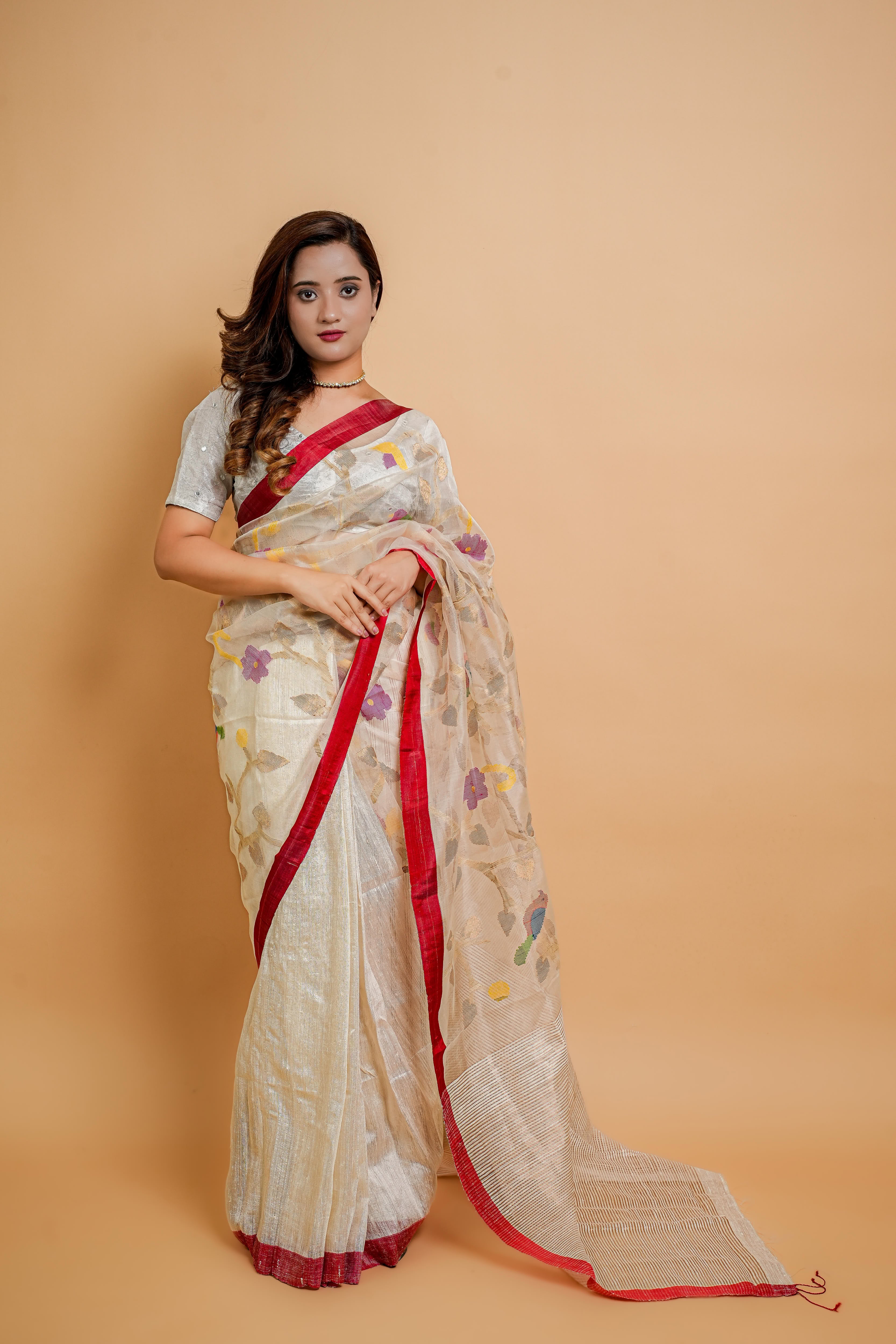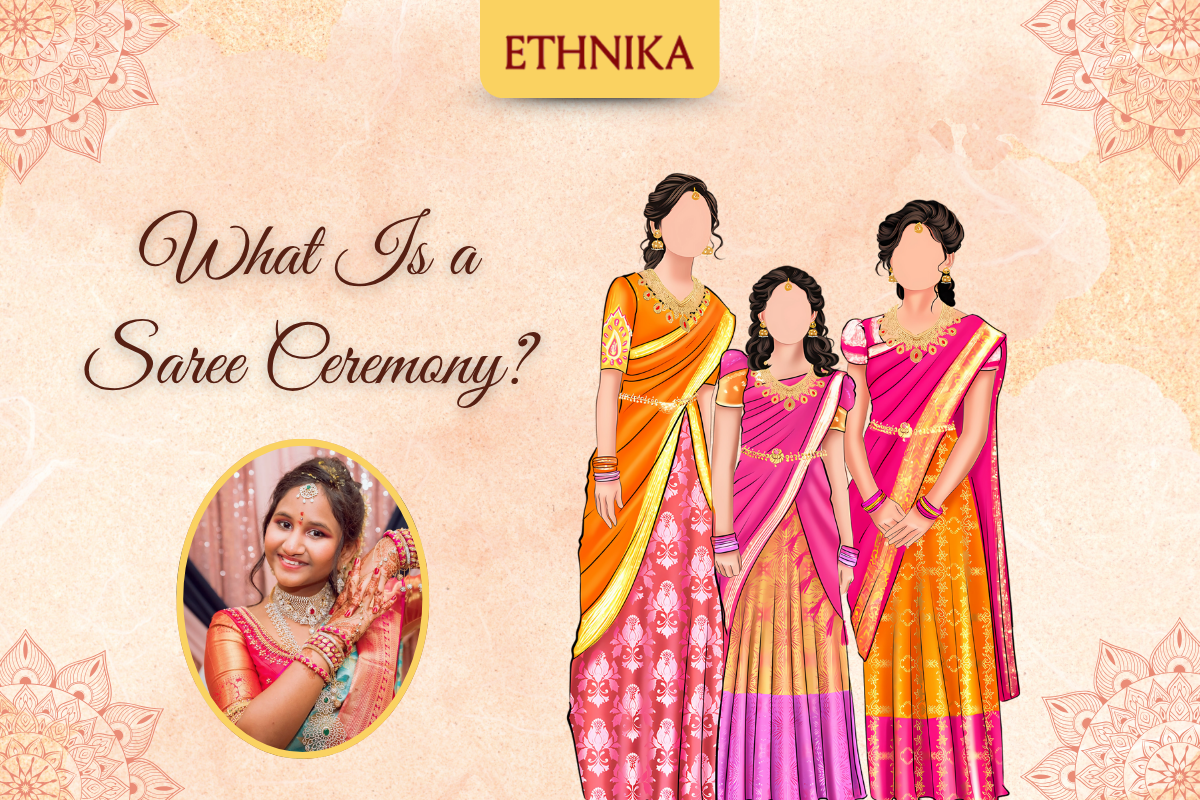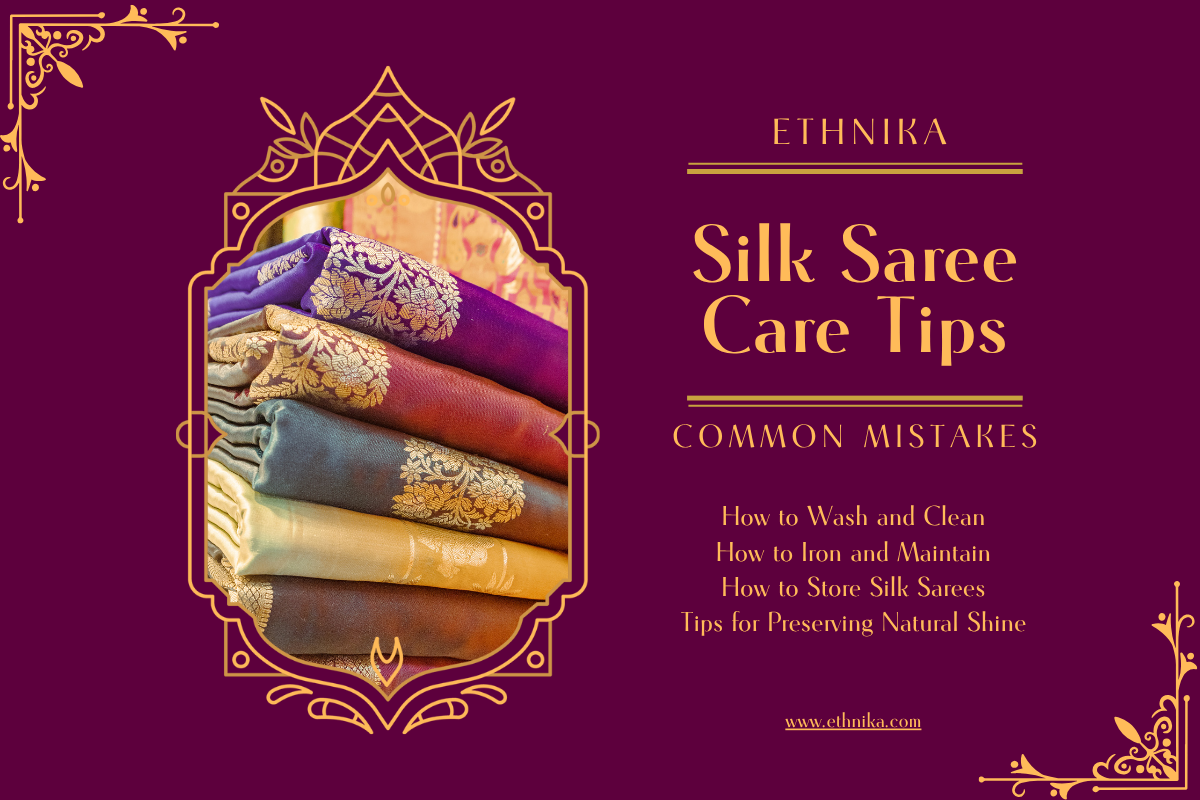What Is a Saree Ceremony? Meaning
A saree ceremony ( also called a half-saree ceremony or Ritu Kala Samskaram ) is a traditional coming-of-age ritual in India that celebrates a girl’s transition from childhood to womanhood.
During this event, the young girl is dressed in an elegant silk half-sari outfit (a long skirt or pavadai/langa with a draped shawl or voni/dhavani) and honored with blessings and gifts. In Indian culture the saree itself is more than just clothing; it is a symbol of grace, heritage and feminine elegance.
A girl’s first saree is often chosen with love and passed down through generations. It carries blessings, protection, and respect from her family. The saree ceremony is a beautiful tradition that connects cultural heritage with personal growth. It marks the girl’s coming of age and helps prepare her emotionally and socially for the responsibilities of womanhood.
Half Saree Ceremony ( Pattu Pavadai )
The Half Saree Ceremony, also known as Pattu Pavadai or Langa Voni Ceremony, is a traditional South Indian celebration that marks a girl’s transition from childhood to womanhood, usually around puberty.
During this event, the girl changes from her childhood attire (a pavadai) into a half saree, which consists of a long skirt, blouse, and a draped dupatta, symbolizing her readiness to take on new responsibilities and step into a more mature stage of life. Family and friends gather to bless her, celebrate her growth, and honor cultural traditions passed on from generation to generation.
How Half Saree Ceremony differs from a Saree Ceremony?
Half Saree Ceremony differs from a Saree Ceremony in that it represents an intermediate stage, the half saree is seen as a bridge between a child’s outfit and a full saree.
On the other hand, Saree Ceremony (often held later in life, such as at a wedding or other milestone) marks the woman’s full transition into adulthood and the responsibilities that come with it.
In short, the half saree celebrates coming of age, while the saree ceremony celebrates adulthood.
Saree Ceremony Origins & Regional Variations
This ceremony is rooted in ancient Indian customs. Historically called Ritushuddhi (or Ritu Kala Samskaram) in Sanskrit, it is explicitly linked to puberty and menarche.
Wikipedia explains, this South Indian ceremony happens after a “girl has her first period” and it is a traditional ritual where family elders give prayers and blessings & celebrate the occasion.
Across India the tradition goes by many names, but all share the same meaning. For example in Telugu it is called Langa Voni (లంగా ఓణి), in Tamil Pavadai Dhavani (పావాడి దావణి), and in Kannada Langa Davani.
In other words, if you search for “langa voni function”, “voni function”, or “half saree function meaning in Kannada”, you’ll find they all refer to this same puberty ceremony (in Kannada the term Langa Davani literally means “half-sari function”). Similarly, “half saree ceremony meaning in Tamil” corresponds to Pattu Pavadai Dhavani (పట్టు పావాడి దావణి) – emphasizing the silk skirt and shawl of the outfit.
In some Telugu communities it may also be called the Onila or Pushpavathi function, colloquial names for this ceremony . In English people use “girls function” or “half saree ceremony” to mean the same ceremony.
Essentially, all these terms, regardless of language – denote the same coming-of-age celebration for girls. In Bengal and other parts of East India there are analogous rituals: for example, Bengali families may hold a saree draping ceremony after the Annaprashan (first rice-feeding), and in Assam the pubertal ritual is known as Tuloni Biya or Xoru Biya, literally a “small wedding” for the girl.
Saree Ceremonial Rituals and Attire
The saree ceremony has many traditional steps and symbols. Families usually pick a lucky date (sometimes with a priest’s help) and decorate the home with flowers & lamps.
Key rituals often include:
-
Preparatory puja: Prayers (often to Ganesh) and a ceremonial bath or homam ( a Hindu fire ritual ) for purification.
-
Dress and adornment: The girl wears a bright, festive half-saree (the langa-pavadai and voni/dhavani) in silk or brocade. Traditional colors like red, green, gold or purple are preferred, as these symbolize auspiciousness and joy.
The colors are bright and festive, usually red, green, gold or purple, all symbols which are considered lucky and bring happiness. The voni or dhavani ( a traditional South Indian garment worn by girls, especially during the Half Saree Ceremony ) saree worn by girls is draped over one shoulder, signifying modesty and grace”.
-
Marking the change: Elders (usually the girl’s parents & uncle) apply turmeric (haldi) and vermilion (kumkum) to the girl’s forehead and hands, wishing for well-being, success, and safety. This is a powerful symbolic gesture, it honors the girl’s transition with family values and guidance.
-
Gift of a Saree: Its highlight when the girl’s maternal uncle (mama) or another senior relative presents her with her first full saree marking her transition into womanhood.
This saree becomes a special symbol of the ceremony and is often passed down through the family. Guests usually give gold jewelry, new clothes, or other gifts as blessings. Elders bless the girl and give these gifts to wish her health, happiness, and a prosperous future.
-
Celebration: After the main rituals, the occasion turns festive with food, music, and dancing. Everyone enjoys a meal together and the girl is often photographed in her new attire. It is a time for relatives and friends to express pride and give best wishes.
In short, the half-saree ceremony combines the seriousness of a religious rite with the happiness of a family celebration. Today, many families add extra touches like photography or special outfits to make the day more memorable. What remains constant is the heart of the tradition: publicly celebrating the girl’s coming of age and receiving blessings from family and community.
What to Wear for a Saree Ceremony or Half Saree Function ?
Traditional dress is an important part of the ceremony. The girl wears a special half-saree outfit, usually made of three pieces: a long silk skirt (pavadai or langa), a matching blouse, and a dupatta or shawl draped like a saree. Silks like Kanjeevaram, Mysore silk, or brocade are often chosen to make the outfit look special.
This outfit bridges childhood and adulthood, showing that the girl is growing up. The colors are usually red, green, gold, pink, or purple, which are considered lucky.
The girl also wears temple-style gold jewelry such as earrings (jhumkas), necklaces, bangles, and sometimes a waist belt. Fresh jasmine flowers are braided into her hair as a symbol of beauty and purity. Many girls also add light makeup or a slim belt, but the overall look remains traditional and festive.
For other women: Adult female guests usually wear full sarees. Common choices are Kanjivaram or Banarasi silk sarees, or richly embroidered chiffon and Chikankari suits, festive or jewel-toned saris for older women, making the girl’s outfit stand out.
Young girls wear simple traditional clothes so they look nice but the main girl remains the center of attention.
For men and boys: The usual attire is traditional kurta–dhoti or kurta–pajama sets. Elder men might wear a silk dhoti and kurta, while boys wear colorful kurtis. The overall dress code for everyone is respectful and festive, mostly traditional Indian attire showing the ceremony’s importance in culture.
Here’s a simplified version of your paragraph keeping only Ethnika mentioned once and removing the rest of the brand-heavy details:
No matter what clothes are you looking for, whether someone is the main girl or a guest, Ethnika offers suitable traditional clothes. You can find elegant sarees & suits, in fabrics like Banarasi silk and chikankari.
These clothes are beautiful and well-made, making it easy for the whole family to look nice for the ceremony
Why Celebrate a Saree Ceremony?
A saree ceremony is very meaningful for family and community. It brings relatives together like: grandparents, aunts & uncles. who share pride and bless the girl. It also keeps cultural traditions alive. By holding this ceremony, families pass on their values and legacy.
It also empowers the girl by recognizing her growing maturity and boosting her confidence. The ceremony helps teach younger generations about cultural traditions while giving the girl a sense of recognition.
In short, the saree ceremony is more than just dressing up, it celebrates womanhood, family, and cultural identity. Taking part in it, or simply watching, fills everyone with joy and shared pride.
Frequently Asked Questions on Saree Ceremony
1. What is the significance of the Half Saree Ceremony in South India?
The Half Saree Ceremony, also known as Ritu Kala Samskaram or Langa Voni Function, holds deep cultural significance in South India. It marks a girl’s transition into womanhood and celebrates her growth with blessings, prayers, and the gift of her first saree — symbolizing grace, maturity, and tradition.
2. What is the age for the Half Saree Ceremony?
The ceremony is usually held when a girl reaches puberty, typically between 11 to 13 years of age. Families choose an auspicious day to honor her first step toward womanhood.
3. What is the Half Saree Ceremony Meaning in Kannada, Tamil, and Marathi?
In Kannada, it’s called Langa Davani; in Tamil, Pavadai Dhavani; and in Marathi, it simply means a girl’s first Saree Ceremony — all representing the same coming-of-age celebration.
4. What is the main purpose of a Saree Ceremony?
The Saree Ceremony’s purpose is to celebrate a girl’s journey into womanhood while preserving cultural values and family traditions. It’s a moment of pride, love, and blessings shared among family and community.
5. Where can I buy sarees for a Saree Ceremony?
You can explore Ethnika’s exclusive collection of Kanjivaram Sarees, Banarasi Sarees, Chikankari Sarees, and Half Sarees — perfect for ceremonies and festive occasions.






